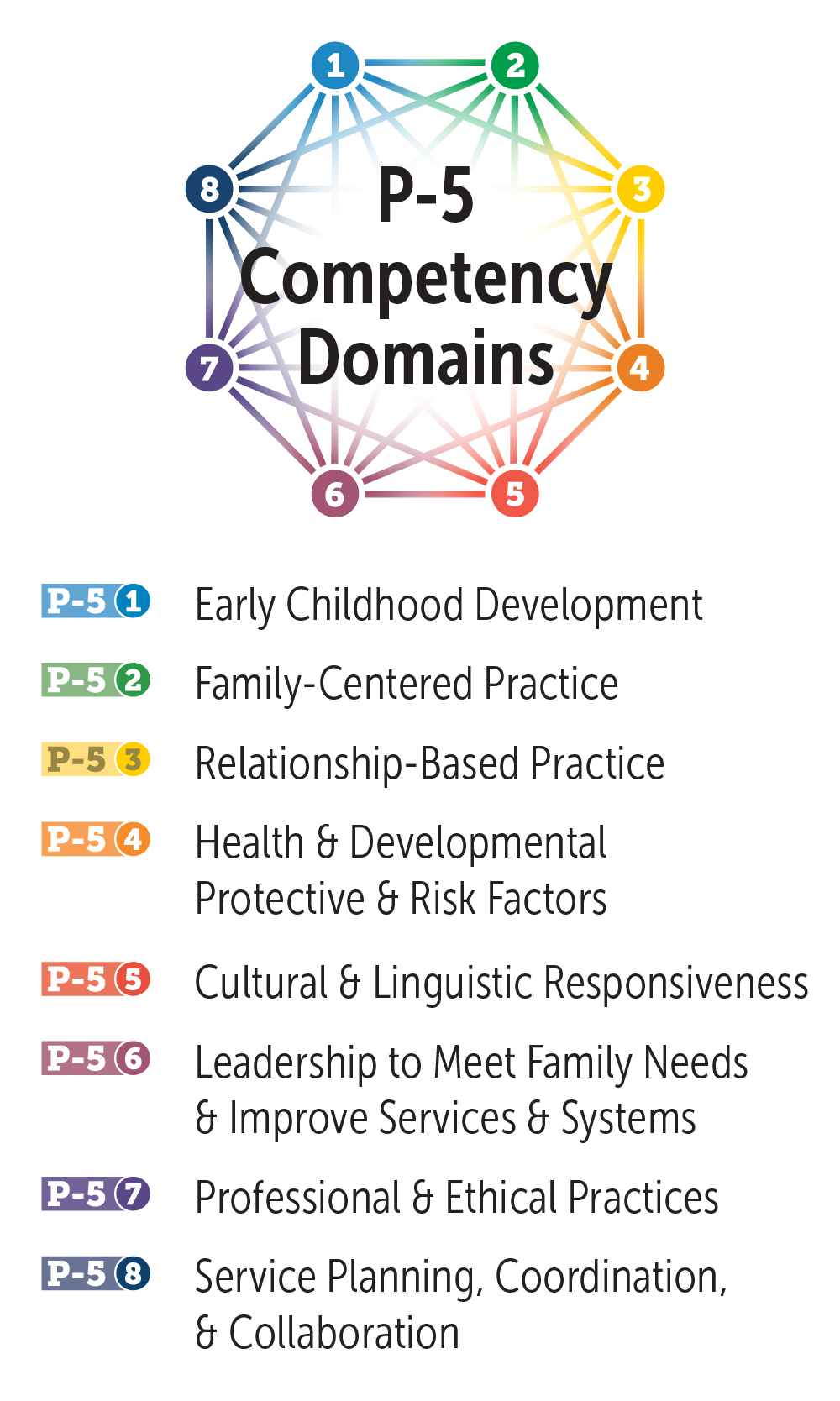
Critical Competencies for Infant-Toddler Educators™ Online Micro-Course, Area 3: Supporting Language and Literacy Development
-
Register
- Non-member - $75
- Member - $60
Developing language and literacy skills begins at birth through everyday loving interactions—sharing books, telling stories, singing songs, and talking to one another. Infants’ and toddlers’ language development is supported through positive and nurturing interactions with caregivers who are responsive and tuned in to young children’s earliest attempts at communication. Infant-toddler educators “use language based learning to develop trusting bonds, use talk for learning, engage in language-rich play, read a variety of books, and reread favorites” (IOM & NRC, 2015, pp. 255–256). These fundamental experiences with language provide a strong foundation for learning across developmental domains. Indeed, “the oral language and vocabulary children learn through interactions with parents, siblings, and caregivers and through high-quality interactions with educators provide the foundation for later literacy and for learning across all subject areas, as well as for their socioemotional well-being” (IOM & NRC, 2015, p. 112).
The core knowledge and attitudes previously summarized from the ZERO TO THREE Competencies for Prenatal to Age 5 Professionals™ (see Core Knowledge and Attitudes Summary) are the foundation for the following specific competencies that can help infant-toddler educators ensure that children’s language and literacy development is optimized.
-
Contains 2 Component(s), Includes Credits
Even before infants and toddlers are verbal they benefit from the back-and-forth interaction that includes language from the caregiver. Infant-toddler educators promote language and communication exchange by reading and responding to young children’s earliest attempts to communicate their emotional, physical, and social needs.
Even before infants and toddlers are verbal they benefit from the back-and-forth interaction that includes language from the caregiver. Infant-toddler educators promote language and communication exchange by reading and responding to young children’s earliest attempts to communicate their emotional, physical, and social needs. A baby’s cries or nonverbal signs communicate many things—sometimes it indicates hunger or fatigue, sometimes it is a request for interaction or comfort. By responding to these communication attempts verbally and nonverbally (e.g., “It sounds like you are ready to get out of your crib. Would you like to come out?”) and then waiting for a child’s response (extending arms toward the child while waiting and watching for him to make eye contact or to reach his arms up to indicate he is ready to be picked up and taken out of the crib), infant-toddler educators teach children that there is a back-and-forth exchange to communication and that their communication efforts result in a caring response that meets their expressed need. At the same time, these responses also set the stage for conversational exchange when children begin to express themselves verbally or with sign language. Sign language is also another way to reinforce communication with all pre-verbal children and helps support emerging and varied communication efforts. Competent infant-toddler educators support early communication attempts with their own language to model and support the development of these emerging expressive language skills.
-
Contains 2 Component(s), Includes Credits
Infant-toddler educators build young children’s expressive and receptive language and vocabulary through purposeful use of language to narrate their own actions and those of the children in their care.
Infant-toddler educators build young children’s expressive and receptive language and vocabulary through purposeful use of language to narrate their own actions and those of the children in their care. They use language to communicate, to calm, to prepare for transitions, and to share play and other pleasurable experiences through the day. Infant-toddler educators also use language to comfort children in distress and to help children solve problems. Finally, infant-toddler educators use language to add richness to children’s everyday experiences and as children observe the world around them, for example, to expand their understanding of processes, patterns, spatial and numerical terms and concepts, and also to share humor. Exposure to language in these ways helps infants and toddlers understand the power of language and its multiple uses while exposing them to a varied vocabulary which, over time, maps new words onto known concepts. Using talk for learning in these ways is the foundation of high-quality learning experiences for infants and toddlers in group care. Language helps educators build and nurture relationships with one another and with the young children in their care. Use of language in these ways is a vital strategy for infant-toddler educators to scaffold young children’s exploration and understanding of the world around them.
-
Contains 2 Component(s), Includes Credits
Early experiences with book reading, word play, and songs are essential to literacy development and should be part of the daily experiences of infants and toddlers in group settings.
The ZERO TO THREE Critical Competencies for Infant-Toddler Educators™ suite of professional development products and services helps educators build the essential knowledge and skills they need, in flexible and user-friendly formats.
Infant-toddler educators have one of the most important jobs in the world, but they often lack the practical resources to support them. The ZERO TO THREE Critical Competencies for Infant-Toddler Educators™ competency model defines the specific knowledge and practices required for infant-toddler educators to be successful now, to support the future of our children.
ZERO TO THREE’S Critical Competencies for Infant-Toddler Educators™ Courses are now available onlineoffsite link.
The Critical Competencies:
- Describe the recommended teaching methods and practices with easily understood guidance and examples
- Feature considerations for working with high-needs populations and multi-language learners
- Support educators who work in group settings (center-based and family child care homes) with infants, toddlers, or both
- Build on professional criteria for the early childhood field
Competency Model
The Critical Competencies address three essential learning and development areas, depicted in the graphic below.


